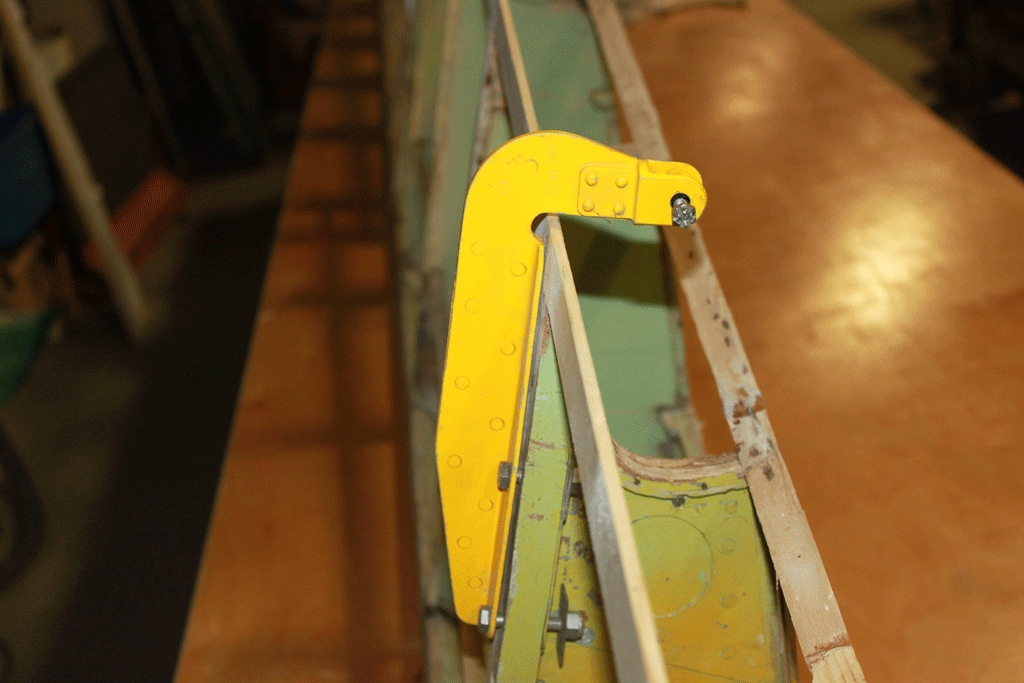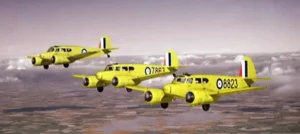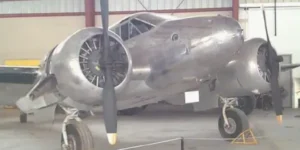Trailing edge Update – Trial fitting of the Wing tip.

After a slight delay due to Covid-19, shop nights at the museum have resumed. Our first task, after coming back, was to complete the wing tip and trial fit it into place. There were some challenges with the fabrication of the wing tip rib. The rib is actually split into two sections which is believed to allow the trailing edge to be fabricated separately from the tip. This may have been to facilitate the installation of the aileron and wing tip later in the manufacturing process.
To ensure that the wing tip is aligned to the trailing edge we needed to temporarily fit the aileron as it serves as a reference point. While this sounds simple, we were to discover that this also was not quite the case. Even more challenges were on their way! Setting the aileron in place required three aileron mounting brackets which attach to ribs #11, #14, and #17; along with three associated pillow block bearing housings which fasten to the aileron itself. A quick trip up to the museum’s storage area yielded the necessary mounting brackets but guess what was missing. Yes that’s right, no pillow blocks. More on the pillow block dilemma to follow.
As we started the assembly process it quickly became evident that there is a set of aileron brackets for the port side and a set for the starboard side. Each set is a mirror image of the other to accommodate the taper in each wing. This was a bit of an “Oh of course” moment after we had spent time fitting, testing, fiddling and then wondering why it didn’t fit. Once port and starboard aileron brackets were sorted we proceeded to turn our attention to the aileron bearing housings.
Upon the discovery that we did not have any readily available bearing housings we began brainstorming possible substitutions. Multiple mock ups scenarios were reviewed. We were able to find a drawing from a Mark V Anson parts manual which at least gave us a general idea of what the housing should look like. About this same time the Museum was planning on a parts sorting / clean up at one of the offsite storage areas. During the cleanup, we sent a raiding party in search of any bearing housings that may be lurking around. We were fortunate and found a bag of housings neatly tucked away on one of the shelves plus we were able to salvage a few more pieces from a damaged aileron section. Other than the usual challenge of removing rusty parts, we discovered the housing bolt heads were a British Standard and the threads, SAE. We suspect that this is likely a result of the Anson being a mix of British and North American engineering.
Once all the pillow block bearing housing were inventoried we discovered that we were still missing a few critical pieces. As we were again deciding on the best method to “mock” up the missing pieces a new volunteer joined the museum. It just so happened that his hobbies included 3D printing. After a quick discussion and trading drawings and pictures, he came to the next shop night with the missing pieces that he had fabricated on his 3D printer.
They were a perfect fit. While they may not be strong enough to stand up to the riggers of actual flight, they will be more than adequate to allow us to proceed with the Wing Tip project.
In the not too distant future, once the Wing Tip has been permanently installed, come the aileron controls and flap hydraulics, but that is a story for another time.
To Help Support the Anson project you can make a donation at the following link.
Anson Restoration Donation – Bomber Command Museum of Canada



